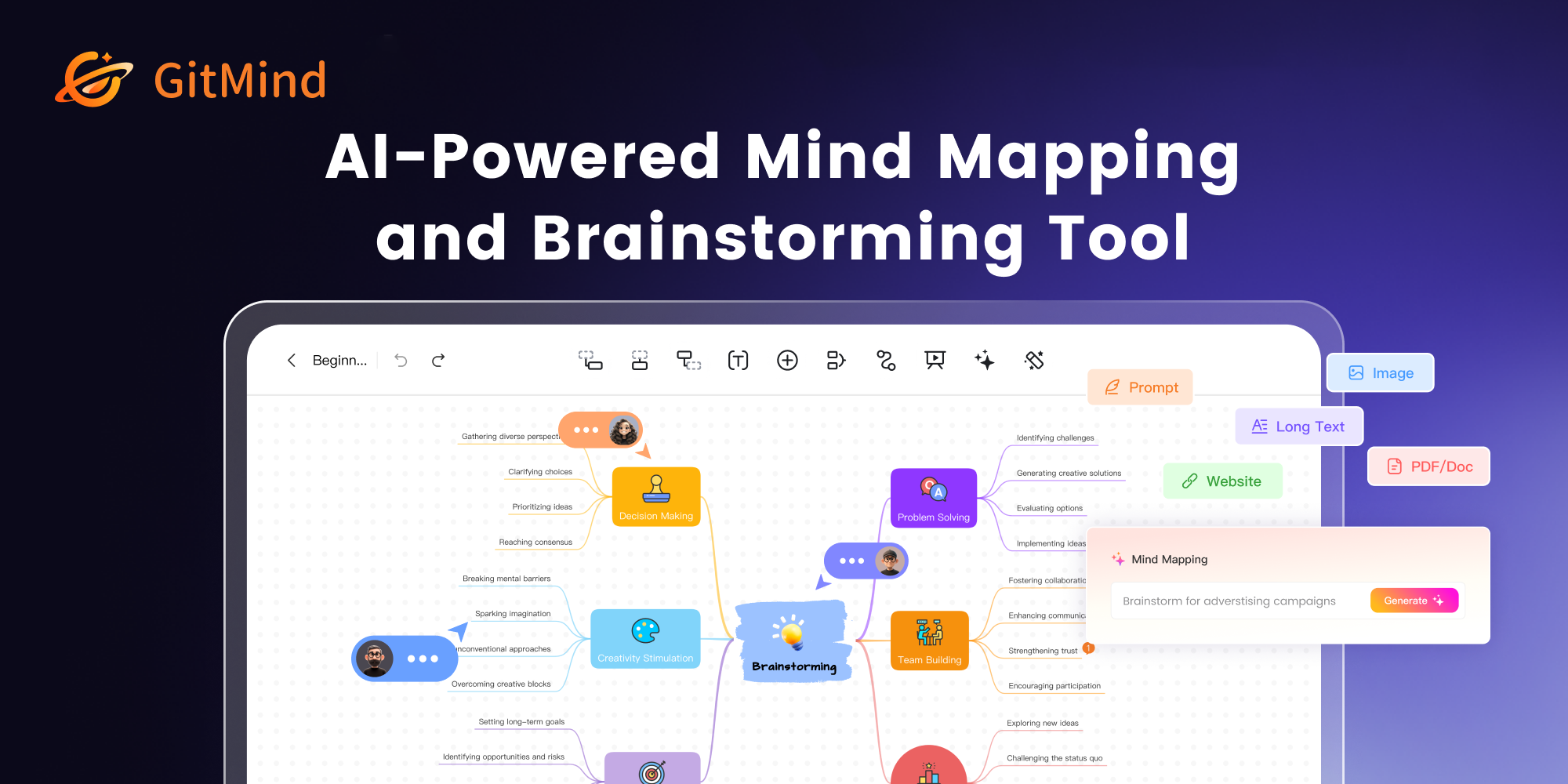AI PDF Summarizer by PDF Guru
Simplify PDFs with AI! Summarize, extract key points, ask questions, and translate in 80+ languages. Perfect for work, study, or research
Pinsearch
Find lucrative keywords to optimize your pins, discover trending topics, find popular pins, and uncover your competitors' strategies to grow your Pinterest traffic.

TapRefer
Know your audience and find affiliate programs within minutes.

Search Atla
Drive more traffic and revenue with the Search Atlas SEO Software platform! Get better results from your SEO campaigns with cutting-edge marketing and SEO tools.

Onestream
Redefine your live streaming experience with a premium cloud-based multistreaming software. Create customized live streams directly from your browser.
Сollaborator
Marketplace for Digital PR and Content Distribution on top media outlets, news websites, blogs, and Telegram channels. Platform for making money online by posting content with backlinks.
Affonso
Affonso is next-gen affiliate software for SaaS, designed to launch, manage, and scale profitable affiliate programs. Automate commissions, track referrals, and grow your revenue.

MakeADir
Effortlessly create online directories with MakeADir's no-code platform. Build and monetize professional directories in minutes!

Music Review World
A platform to request single, EP, and Album review from experts
Directify
Directify is a platform that allows you to create your own directory website. It is a simple and easy to use platform that allows you to create your own directory website.
Linkbound
Linkbound helps you filter your top network and suggests the best way to DM (and close) them.

TrendEdge
A cutting-edge platform that combines alternative data insights with AI-powered analysis, TrendEdge.
Podsqueeze
Podsqueeze is an all-in-one AI-powered tool designed to automate podcast production and promotion.

Niche Toolbox
TheNiche Toolboxi an AI-powered tool for niche site owners looking to grow their audience, generate revenue, and save time.
Reviewnicely
Reviewnicely is an AI-powered all-in-one review management platform that helps businesses easily request, manage, and showcase customer feedback.
SaneBox
SaneBox is an AI-powered email assistant that helps you better manage your inbox, from prioritizing your most important messages to eliminating unwanted emails forever, saving hours (and frustration!) each day.
ZeroGPT
ZeroGPT stands as a preeminent AI detection tool, renowned for its unwavering accuracy.
AImReply
AImReply is an online AI Email Assistant that helps you speed up the rate at which you reply to your email.

SciSummary
SciSummary is an AI-driven tool for researchers and students.

Charlie Lounge
Charlie Lounge, a cutting-edge AI hub, brings forth a unique blend of interaction, innovation, and limitless growth opportunities.

Gizzmo AI
Gizzmo is an innovative AI-powered plugin redefining content creation for Affiliate marketers.
PDF Guru
Chat PDF is an AI-powered tool that allows users to interact with PDF documents by asking questions about their content.
.png)
Swell AI
Swell AI is a comprehensive AI-driven platform designed to transform audio and video content into a wide variety of digital formats.

PixelHaha
PixelHaha is your ultimate AI-powered creative toolkit to streamline your image and video editing needs.

GStory
GStory is the ultimate creative platform designed specifically for small businesses in marketing, e-commerce, e-learning, and more.
Junia AI
Junia Ai is a complete all-in-one content creation platform powered by AI.

quso.ai
quso.ai formerly known as Vidyo.ai is an incredible AI-powered content repurposing software that revolutionizes how you transform your long-form podcasts and videos.
Surfer SEO
Surfer SEO is an advancedAI SEO tooldesigned to enhance your website's search engine ranking and drive organic traffic.
SEO Writing
SEO Writing AI is a cutting-edge AI writing tool designed to revolutionize the creation of SEO-optimized articles, blog posts, and affiliate content.
uBrand
uBrand is a cutting-edge AI-powered branding platform meticulously designed to empower visionary entrepreneurs by providing them with invaluable assistance in the conceptualization, development, and successful launch of their exciting new brands.

Coursebox AI
Coursebox is your ultimate AI-powered course creator and comprehensive learning management system.

Submagic
Submagic is an AI-powered tool that revolutionizes the way you create captions for short-form content, offering a wide range of features designed to boost viewer engagement.

Flot.ai
Flot.ai is a remarkable AI AI Copilot for All Apps, Docs, and Websites that has the potential to revolutionize the way we interact with text across various platforms.

Descript
Descript is an AI editor for media files, enabling easy editing.
Uberduck
Uberduck is one of the most popular AI-powered voice tools that provides an extensive range of voice options for text-to-speech synthesis.
Coach Marlee
Coach Marlee by Sydney-based Fingerprint for Success is the world's first AI coach and utilizes conversational AI technology to provide real-time developmental coaching to anyone with an internet connection, for free.

Originality AI
Originality AI Plagiarism and Fact Checker - Publish With Integrity

Adsy
Order quality guest posts and reach your business maximum with Adsy. Boost traffic, ranking, and sales by placing blog posts on unique sites with real traffic.
Arvow
The best SEO AI article writer and automatic blogging tool. Generate articles with images, videos, links, and automatically post them to your site to rank higher.
Liinks
Gather your socials, music, videos, and more on a beautiful link-in-bio page.

Minutes
Automate your meeting and lecture audio notes with AI. Minutes AI creates formatted notes and transcriptions from live audio, uploaded audio files, or imported YouTube links. Chat with your audio to extract key insights, list action items, and more.

Arcads
AI UGC Made Easy: Write your script, pick your actors and generate your UGC video in 2min.
Tinyadz
Tinyadz is a better ad network. No fluff, no fraud. Advertisers get real ROI. Publishers earn legit revenue. It’s advertising that works for everyone.

Userlens
Next-gen product intelligence for customer success

DeepAI
Artificially intelligent tools for naturally creative humans.
BlogBuster
BlogBuster is your all-in-one solution to automate blogging, enhance SEO rankings, and drive sustainable organic traffic. Create high-quality blogs that rank higher with AI-powered writing, top-class templates, SEO best practices, and one-click publishing all on autopilot.
Qwen AI
Qwen AI offers comprehensive functionality spanning chatbot, image and video understanding, image generation, document processing, web search integration, tool utilization, and artifacts.

iClosed
The best Appointment Scheduler Software trusted by thousands of businesses to get more leads & meetings without spending more on advertising.

PageGrowth
Supercharge your social media strategy with PageGrowth. Study competitors' viral Instagram™ content and replicate it. Try Pro free for 14 days.
Qura AI
Grow your Twitter (X) and LinkedIn accounts with personalized AI-powered replies and automation. Start your social media journey with Qura today!
Macaw
Macaw is an advanced AI writing tool designed to generate high-quality, human-like content in seconds.
LinkedBase
LinkedBase is an AI-driven tool designed to automate LinkedIn lead generation, saving businesses hours of manual outreach while driving high-quality conversions.
TimeSkip
Struggling to optimize your YouTube videos?TimeSkipis here to revolutionize your workflow! In just5 seconds, this powerful Chrome extension generates SEO-optimized chapters for your videos, saving you hours of manual effort.

Hoppy Copy
Hoppy Copy is an AI email copywriting platform that allows you to use AI to generate powerful copy for hundreds of different email marketing campaigns, drips, newsletters, and more.

Dashboa
Dashboa is a game-changer for digital marketers and SEO specialists, offering AI-driven solutions that streamline your efforts and deliver concrete results.
SEO.ai
SEO.AI is aiming to revolutionize SEO with the power of AI. I was quite impressed when I took the try of this AI SEO copywriter.
Pixlr
Pixlr is a versatile AI image editor & image generator that resonates well with creative minds, especially those diving into the world of digital marketing and content creation.

KnowledgeBase
KnowledgeBase is an AI-driven customer service software for lightning-fast customer support and effortless self-service that helps customers and support teams at the same time.

FastBots.ai
FastBots.ai is an AI customer service chatbot trained on the custom data you give to it
Ghost Craft AI
Ghost Craft is an AI content writing tool that I came across while engaging with my SEO community on Twitter a few days ago.

ClipDrop
ClipDrop is an incredible suite of visual editing and creation tools powered by the impressive technology of Stability AI.

Vizard
Vizard is an innovative web-based video editing tool designed to empower users to effortlessly create captivating social media snippets within a matter of minutes.
ReplyGuy
ReplyGuy is an AI-powered social engagement tool trained to mention your product in online conversations naturally.

Penfriend ai
Penfriend is an AI Content Writer and they have claimed that it's the only one "On The Internet" I was keen to try it out after I came across it on LinkedIn a few weeks ago.

AI Directories
AI Directories help you launch your AI product to 100+ directories AI Directories list is dedicated to streamlining the submission process for AI tools, ensuring founders can easily secure valuable backlinks, boost organic traffic, and elevate their online presence.
MyCleverAI
MyCleverAI is a powerful tool designed to streamline the web design process, making it accessible even for those with minimal technical expertise.
Makeweb.ai
Makeweb.ai is an innovative AI-powered website builder that offers a seamless way to create, customize, and publish websites with minimal effort.
LinkDR
LinkDR is a new leading link building software for SEO agencies and professionals.
Wondershare
Experience the power of Wondershare Filmora, a feature-rich video editing software designed to boost creativity and productivity.

Nova A.I
Nova A.I. is your go-to online video editor for effortless video creation and editing. With its range of convenient tools, you can automatically add subtitles to your videos and translate them with ease.

Landbot AI
Landbot AI is a user-friendly chatbot builder that empowers anyone to create GPT-powered chatbots without coding.

My AskAI
My AskAI serves as an AI chatbot builder that empowers you to incorporate your personal material and fabricate your individual ChatGPT.

AI Torke
AI Torke is a virtual assistant that content creators & influencers use to create unique content for blogs, videos, and social media faster.

Manifest AI
Manifest AI is a shopping assistant powered by GPT-3.

FeedHive
FeedHive helps you create, schedule, publish, and easily manage your social media content at scale with FeedHive'sAI-powered platform.

Sivi AI
Sivi AI helps you generate visual content from text instantly.
Translate.video
Translate.
Krater.ai
Krater.ai is your AI SuperApp - All AI Apps, One Application.
.png)
BlogSEO AI
BlogSEO AI is an AI-powered blogging tool to reform how users generate high-quality, user-focused, and SEO-ready articles (3000+ words average).
Decktopus AI
Decktopus AI is a groundbreaking all-in-one AI-powered slide generator that revolutionizes the way you create stunning presentations, proposals, and microsites effortlessly and efficiently.

Captions
Captions is the All-in-One AI Video Tool.

Robinize
Robinize is a powerful SEO tool for content writers that does all the research you need to rank for a particular topic
Autoblogging.ai
Autoblogging.ai is an advanced AI article-writing tool that seamlessly combines the power of OpenAI's GPT 3, 3.5, and 4 models.

Fathom
Fathom a forever free AI Zoom, Microsoft Teams, and Google Meet assistant that seamlessly captures real-time call notes.
SE Ranking
SE Ranking is the ultimate all-in-one SEO software that equips you with everything necessary for successful online marketing projects.

NeuronWriter
NeuronWriter is a powerful AI content editor that helps you optimize your website content for Google.
BrieflyAI
BrieflyAI is one of the best tool for your AI meeting summaries, insights, and follow-ups.

Zoocial
Zoocial is an AI-powered social media marketing tool! The all-in-one platform caters to every aspect of your business's social engagement needs.
Syllaby
Syllaby is a AI-powered social media tool that serves as the cornerstone for businesses seeking to craft sensational viral social media videos.
Tugan.ai
Tugan is the AI social media tool that helps you generate emails and social media content in seconds, I mean very fast by just providing your text content or just even the url alone.

Autopod
AutoPod is the one and only AI-driven podcast editing tool, that is engineered to streamline podcast production and elevate audio excellence.

Synthesia
Synthesia is a powerful AI video generation tool.

Opus Clip
Opus Clip is an AI-powered Video Repurposing that turns long videos into high-quality viral clips for you to share on TikTok, YouTube Shorts, and Reels to increase social media reach.

TAJA AI
Taja AI stands as the ultimate AI-powered metadata specialist, exclusively designed for content creators boasting YouTube channels.

Botpress
Botpress is an open-source conversational AI platform that holds immense potential for developers and enterprises seeking to create and deploy intelligent chatbots.

Scalenut
Scalenut, the all-in-one organic marketing platform, is making waves in the world of digital marketing and SEO.

GPTKit
GPTKit, a convenient and free-of-charge solution, utilizes six unique methodologies to accurately identify and classify text produced by AI.

GitMind
GitMind is a costless mind-mapping tool powered by AI, which boosts effectiveness in work and learning endeavors.

Visus
Visus offers users the convenient ability to upload their documents and receive immediate responses to their inquiries through an AI-powered documentation and knowledge base.

Socra
Socra's AI assistant, you will receive intellectually stimulating inquiries and valuable counsel to assist you in attaining your aspirations, whether they be grand or modest.
GetGenie
GetGenie functions as an AI aide that oversees content and SEO management on your website.
Frase
Frase is an AI solution designed to enhance SEO and expedite the discovery of keywords, content, and ideas.

Play.ht
Play.ht is an AI Voice Generator & Text to Speech AI Voice Platform
FakeYou
FakeYou is a cutting-edge text-to-speech platform that empowers individuals to generate lifelike AI-driven voices reminiscent of renowned individuals.

Murf
Murf stands as an influential platform for AI-driven text-to-speech conversion and voice modulation.
Wellsaid
Create professional-quality voice overs in any dialect or production style with our secure AI voices.
HARPA AI
HARPA AI is a Chrome extension for AI-powered web automation: ChatGPT for Google Search, ChatGPT writer, summarize, rewrite, extract and monitor web pages, prices and data.
GrowthBar
GrowthBar is a smart SEO software that helps webmasters and business owners boost their online visibility.

DapperGPT
Enhance your ChatGPT experience with DapperGPT.

Hypertype
Hypertype is definitely your ultimate AI email companion that can supercharge your email game.
Scribbly
Introducing Scribbly, the ultimate AI-powered email writing assistant designed specifically for busy professionals like you.
Superflows
Superflows makes it easy to add a powerful, reliable AI assistant to your product.
Devi
Devi monitors keywords in Facebook groups, LinkedIn, Twitter, and Reddit, and outreach using ChatGPT or Bard to close deal.
Engage AI
Engage AI functions as a complimentary add-on for web browsers, enabling you to compose well-informed responses on LinkedIn articles.
AIPRM
AIPRM serves as a complimentary Chrome add-on that transforms the already robust ChatGPT into a potent tool for enhancing search engine optimization.

Social Intents
Social Intents is a dynamic and innovative live chat platform that seamlessly integrates with two popular communication tools, namely Microsoft Teams and Slack, along with the cutting-edge technology of ChatGPT.

Zipchat AI
ZipChat AI simplifies the creation of a customer service chatbot for your website.
Tidio
Tidio presents an automated chatbot solution that enhances customer support and boosts sales. With its cutting-edge features, this tool facilitates continuous availability for your business through a live chat widget.

Durable
Durable is an AI-powered website builder designed for entrepreneurs and small business owners.

Dora AI
Dora AI presents an unparalleled opportunity for you to effortlessly unleash the potential of powerful websites, harnessing the sheer magic of AI.
Butternut AI
Discover the incredible capabilities of Butternut AI, your ultimate solution for crafting a comprehensive and fully operational website in a matter of seconds, all without the need for any coding expertise.

Pandatron AI Coach
Pandatron AI Coach helps you by harnessing your AI coach's power, you can exponentially enhance your productivity.

PerfectEssayWritaer.AI
PerfectEssayWriter.AI is the world's first AI-powered essay-writing tool

ElevenLabs
ElevenLabs provides one of the most lifelike AI voice synthesis tools available.
Cleanvoice
Cleanvoice is an advanced AI voice tool that enhances the audio quality of your recordings by eliminating filler sounds, stuttering, and unwanted mouth noises.
Krisp
Krisp is a powerful AI software solution that enhances the quality of online meetings and calls by eliminating background voices, noises, and echo.

Resemble AI
With Resemble's AI voice generator, you can effortlessly produce natural-sounding voiceovers in seconds, with the option to incorporate different emotions.
Voicemod
Voicemod offers an AI-driven voice changer equipped with seven voice filters.

Altered AI
Discover Altered AI, the cutting-edge audio editor that brings together various voice AI technologies in a user-friendly application.

VisualizeAI
Experience the power of VisualizeAI, a versatile design visualization tool that allows you to bring your ideas to life.
Visily
With Visily, crafting captivating wireframes for apps or websites is a breeze.
Designify
Transform your favorite photos into stunning designs effortlessly with Designify.

AI Colors
AI Colors is the ideal design tool to achieve the perfect color scheme for your UI or website.

Machine Translation
Discover machine translation, an AI-powered online tool that provides complimentary translations.
D-ID Studio
D-ID’s Generative AI enables users to transform any picture or video into an extraordinary experience.
Unscreen
Unscreen is an advanced AI video editor that simplifies the process of removing backgrounds without requiring complicated greenscreen techniques.

RunwayML
Runway ML is an online AI video editor powered by machine learning, designed to streamline the editing process and provide numerous enhancements.

Elai.io
Create personalized AI videos effortlessly and in minutes with Elai.

Simplified
Simplified provides a complimentary AI logo creator that enables users to swiftly and effortlessly fashion a sophisticated emblem for their brand.
Logo.com
Logo.com is an AI-powered logo generator that enables users to produce professional logos for their enterprises or endeavors.

LogoAI
LogoAI offers a robust solution for generating logos, aligning brand identities, and automating promotional activities on social media.

Freepik
Freepik AI Image Generator is an innovative and cutting-edge digital art utility that empowers you to unleash your creativity by generating distinctive and one-of-a-kind images through the power of language.

Adcreative
AdCreative is an exceptional AI solution designed to produce persuasive ads and social media creatives that drive optimal conversions.

Lumiere3D
Lumiere3D stands at the forefront as an advanced AI platform, revolutionizing the way businesses craft captivating cinematic videos for their e-commerce and marketing endeavors, all accomplished within a matter of minutes.

Robin AI
Robin AI is a groundbreaking solution designed specifically to streamline and automate the sales funnel procedures for companies.

VOC AI
VOC AI represents an AI-driven system designed to engage in customer voice monitoring and product investigation.
IMAI
IMAI (Influencer Marketing AI) serves as a comprehensive influencer marketing solution, empowering brands, agencies, and online retailers to explore, assess, engage, and evaluate influencers.
Saleshandy
Saleshandy is an AI tool for automating cold emails, enabling users and businesses to expand their outreach and lead-generation endeavors with excellent deliverability and response rates.
Twitterbio
TwitterBio lets you generate your next Twitter or other social media bio in seconds! Simply copy your current bio into the tool, select a vibe, and click “Generate your bio”.
Longshot
LongShot is an impressive AI writing assistant and content generator that offers a viable option for those seeking extensive content creation, such as articles and blog posts.
Reply io
Reply.io is a sales engagement platform powered by artificial intelligence.

BlueWillow
BlueWillow functions as an image generator accessible through its Discord server, similar to Midjourney.
CF Spark
CF Spark, developed by Creative Fabrica, is an AI-powered tool for generating images.

Moxly
Moxly allows you to build a mobile app using AI builder, a cutting-edge solution designed specifically for IOS and Android platforms.

Dreamlike.art
Dreamlike.art offers an exciting opportunity to produce mesmerizing AI-generated artwork effortlessly.
Hotpot
Hotpot AI Art generator facilitates the production of images and artworks in a variety of styles.
Crossplag
Crossplag is an incredibly comprehensive and all-encompassing solution explicitly designed to help individuals verify the authenticity of their work.

Writers AI Content Detector
Writer.com offers a complimentary AI content detection tool available for utilization directly on their website.

GPTZero
GPTZero, an exceptional AI content detection tool, possesses the remarkable ability to analyze text and provide insights into its likely origin, discerning between human-authored content and that which is generated by AI.
Copyleaks
Copyleaks functions as an AI-based plagiarism and content checker, equipped with both individual and corporate features.
BrandWell
Content At Scale offers a platform that caters to website owners and marketers by providing imperceptible content generated by AI.

NovelistAI
NovelistAI is a website that uses artificial intelligence to generate unique stories, novels, and interactive books.
Smodin
Smoodin is all in all AI writing tool that is so versatile.

AnyWord
Anyword is an Omni channel performance ai copywriting tool that has taken the industry influencers to scale at a high level up to 20% performance level compared to other AI Writing tools out there.
ProwritingAid
Prowritingaid makes your writing shine with its all-in-one Ai tool that is accessible anywhere you are doing your writing.
InstaNovel
InstaNovel allows you to generate your own mini-novel just with a prompt.

CreativAI
CreativAI solves the general problem of having a writing block, helping you with inspiration as you intend to write.

Katteb
Katteb is an AI Content writing tool that aims to revolutionize fact-checking of AI content with Over 150,000 Happy Users.

Jasper AI
Jasper AI is artificial intelligence-powered writing and content creation software designed to produce unique and inventive content.

Writesonic
Writesonic is a remarkable AI writing tool designed to assist writers and creators in efficiently crafting various types of content, such as blog posts, social media updates, and in-depth articles.
Linguix
Linguix is a platform that aims to help you write powerfully, clearly, and correctly, whether you are writing business emails, essays, or even text messages.

Chilbook AI
Childbook AI is a platform that allows you to make a book specifically for children, their personalized children's books are fully customized with original characters, illustrations, and an imaginative plot.
Rytr
Rytr stands out as a widely used AI tool designed to assist online writers in expediting their workflow.

Writesmart
Writesmart helps you supercharge your influence on Linkedin, and your Interactions with GPT-Powered comments leave a memorable mark.

Ocoya
Ocoya serves as a platform for content creation, expediting and streamlining the process of generating, planning, and releasing social media content.

SocialBu
SocialBu leverages AI technology to assist you in managing and enhancing your social media platforms.

Postwise
Postwise, an AI-driven Twitter tool, streamlines the creation, scheduling, and growth of your Twitter presence.
.png)
Tweet Hunter
Tweet Seeker serves as an AI-driven Twitter tool for managing and optimizing your presence, enabling both businesses and individuals to enhance their sales, expansion, and networking endeavors on the platform.
Birdy
Birdy serves as a Twitter A/B testing instrument designed to enhance your profile's engagement and foster the growth of your followers.

Thread Creator
Thread Creator lets you generate your next Twitter or other social media bio in seconds! Simply copy your current bio into the tool, select a vibe, and click “Generate your bio”.

Taplio
Taplio is a LinkedIn enhancement tool driven by artificial intelligence that aims to facilitate the expansion of your personal brand.

Munch
Munch effortlessly converts your YouTube videos into content optimized for a wide range of platforms such as Instagram, TikTok, YouTube, Facebook, Twitter, LinkedIn, and more.

Hey Github
Hey GitHub is an innovative coding tool that integrates seamlessly with GitHub Copilot that helps you write code without the keyboard.
AI Query
AI Query is an efficient tool designed to assist users in effortlessly generating SQL queries, even if they possess limited SQL knowledge.
Codeium
Codeium is an AI programming tool created by Exafunction's team.

Warp AI
Warp is an advanced terminal tailored for developers, has recently incorporated AI capabilities to enhance debugging, command search, and problem-solving functionalities.

Namelix
Namelix utilizes a robust AI linguistic model to create concise and captivating names for businesses.
Brandmark
Brandmark helps you create a unique, professional business logo.

Content Bot
An Amazing AI Content that helps write blog content, marketing copy, and landing pages, and also gives you mind-blowing inspiration for anything related to copywriting.
Categories
All
3D technology
A/B testing
Accounting
Advertising
Affiliate tracking
AI agent
AI UGC
Analytics
Android
Angel investing
Apple watch
Audio
Banking
Big data
Billing
Blogging
Books
Bots
Branding
Browser extensions
Building products
Business intelligence
Careers
Chatbots
Chrome extensions
Cloud computing
Cloud infrastructure
CMS
Collaboration
Communities
Content creation
Content detectors
Customer support
Data visualization
Databases
Dating
Design
Developer APIs
Developer tools
Directory
E-commerce
Education
Families
Feedback tools
File sharing
Finance
Fintech
Fitness
Form builders
Freelancers
Fundraising
Google cloud
Guides
Home inventory
Image generator
Image recognition
Interior design
Investment management
Invoicing
iOS
Jira
Job boards
Jobs
Journaling
Journalism
Knowledge management
Language learning
Lead generation
Legal
Link In Bio
Live streaming
Logo Maker
Mac
Machine learning
Market research
Marketing
Marketplaces
Meeting software
Mental health
Messaging
Monitoring
Motion design
Music
News
No code
Note taking
Notion
Nutrition
Online scheduling
Open source
Optimization
Parenting
Payments
Performance monitoring
Photography
Podcasting
Privacy
Productivity
Productized services
Project management
Reading
Recruiting
Reduce costs
Remote work
Restaurants
SaaS boilerplates
Sales
Scrapers
Screenshots
Search
Security
SEO
Ship fast
Social media
Speech recognition
Stable diffusion
Storage
Task management
Testimonials
To do lists
Tourism
Trading
Transcriptions
Translation
Travel
Venture capital
Video
Video editing
Video generator
Voice
Waitlist
Web hosting
Web3
Website builders
Writing
Filters
Tags
#Paid
#Free Trial
#Subscription
#Credits
#Lifetime
#BYOK
#Free
#Prepaid
#Pay as you go
#Done For You
#Reseller
#API
#Money-back guarantee
#Book Demo
Easy Save AI is an extensive directory of Digital Marketing AI tools available online and curated by a digital marketing expert, Muritala Yusuf. Easy Save AI primary objective is to ensure that AI is accessible to everyone. You can conveniently utilize our website to discover new AI tools and services or locate specific ones based on your requirements by Using our easy-to-use filter on the home page.
AI technology is constantly progressing, and experts are continuously developing sophisticated models for various applications. Our directory includes an array of AI tools such as AI copywriters, text and image generators, AI transcription, SEO automation tools, and more. There is something suitable for every individual!
Our website is committed to offering user-friendly AI tools and resources that can contribute to the success of you and your business in the digital era.
We meticulously evaluate and curate each tool to ensure they possess valuable features and are accessible to both novices and experts. With the Easy Save AI platform, you can locate the AI tools you require and save valuable time and money.
We sometimes have discounts on AI Tools and we always specify on the product page for you to use.
Disclaimer: I may earn an affiliate commission at no extra cost to you.


